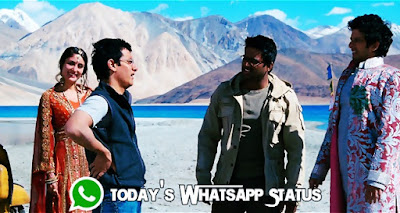Long overshadowed by Japanese legends Yasujiro Ozu, Akira Kurosawa, Kenji Mizoguchi and Mikio Naruse, Hiroshi Shimizu continues to lurk in relative and undeserved obscurity in the West. Criterion’s 2009 Eclipse set, Travels with Hiroshi Shimizu, spotlighted four of the director’s finest pre-World War II films, each of which exhibits his propensity for capturing the idyllic nature of life in rural Japan with a distinctive tinge of bittersweet melancholy, but the ensuing 15 years did not see Shimizu’s stock rise all that much. With the Museum of the Moving Image in New York’s recent massive retrospective, Shimizu is finally getting a more comprehensive introduction in the United States, including many of his lesser-known post-war films.
While Shimizu’s pre-war output was often marked by a singular fusion of lighthearted drama and understated humor within spaces of leisure, post-war efforts like Mr. Shosuke Ohara began to more directly incorporate the sweeping social and economic changes in Japan after its defeat by the Allied Forces. Mr. Shosuke Ohara makes for a fascinating contrast to Shimizu’s earlier work, yet it is still very much a provincial film, situated in a small, remote village whose transition to modernity comes with a vastly different set of drawbacks and consequences than those in the urban spaces that other Japanese directors more commonly depicted after the war.
Shimizu’s film follows Saheita (Denjirō Ōkōchi), a nobleman and the last living heir of a once wealthy and prominent samurai family, as he’s faced with both the diminishing importance of his social status and the increasing demands from the townspeople who continue to rely on his assistance in all sorts of matters. In this sense, Saheita perfectly embodies the tensions between old and new Japan. He’s an innocent of sorts who’s caught in the crosshairs between tradition and progress and left to take the brunt of things on both sides. He adheres to the custom of helping his fellow citizens whenever they request it, while doing so in a manner that helps to accelerate the modernization of the town, which will make his role in the community obsolete.
Shimizu wisely portrays Saheita’s decline as very gradual. Once a philandering alcoholic living a carefree life, Saheita finds his calling just as his world began to vanish. As the film starts, his enormous home is already in a state of disrepair, and we learn that he’s nicknamed Mr. Shosuke Ohara, after a character in Japanese folklore who squandered all his riches because he liked to drink, gamble and loaf around all day. But despite his aloofness, Saheita is a kind and gentle soul, who willingly parts with more and more of his money to the benefit of the town, whether it’s paying for new uniforms for the local baseball team or sewing machines to help female villagers earn a living of which they would otherwise be deprived.
Through his compassionate gaze, Shimizu renders Saheita as a sympathetic figure while also holding him responsible for the part he takes in his own downfall and acknowledging the privileges he’s had throughout his life. He is both a victim and beneficiary of his bloodline as well as a wildly irresponsible yet indispensable figurehead of his community—a living, breathing and drinking contradiction. But what redeems him is his unwillingness to shirk his responsibilities even when it drives him deeper into debt and leaves him more helpless than the friends and neighbors who once looked up to him. It’s a clever way of not only depicting the changing cultural tides in Japan’s early post-war years, but also of showing how and why certain norms and traditions got swept away in the sands of time and acknowledging the pros and cons of that loss.
Despite Saheita’s inevitable decline, Shimizu imbues the film with his characteristic gentle humor, hitting grace notes not only through his protagonist’s self-destructive selflessness but in Saheita’s amusing attempts to evade the greedier residents and his dealings with the moneylender, whom he repeatedly gets drunk to avoid having to pay back any more of his loan. These moments of humor are not mere distractions from the direness of Saheita’s situation, but rather stem organically from it and slyly satirize the traditional gap between the townspeople and their supposed “superior,” Saheita.
Of course, none of this would work as well without Denjirō Ōkōchi’s masterfully subtle performance, which evokes a casual indifference that masks Saheita’s pain and weariness as he is both literally and figuratively stripped of everything of value in his life aside from a meaningless title. It’s a performance that, much like the film, carefully treads the line between the tragic and the comic, and the pitiful and the admirable. And through Shimizu’s admirably humanistic perspective, Mr. Shosuke Ohara manages the near-impossible task of providing cultural commentary free of judgment or blame, accepting all the characters as the flawed humans they are, inextricably linked to a painful yet necessary historical moment as Japan shifted from imperial rule to a constitutional monarchy.
The post Criminally Underrated: Mr. Shosuke Ohara appeared first on Spectrum Culture.



















